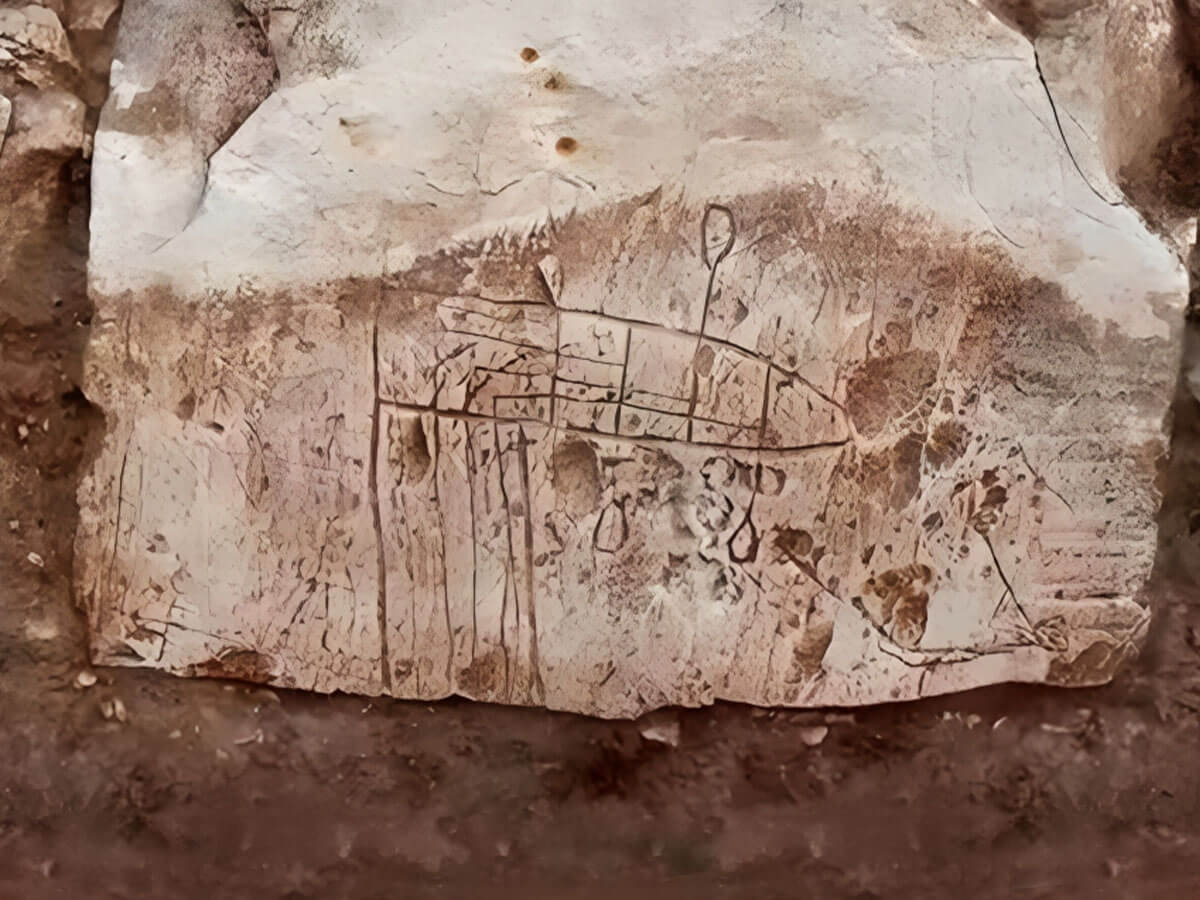
A Byzantine -period church discovered by archaeologists with the Israel Antiquities Authority (IAA) bears wall art that may give clues about the pilgrimages of Christians through Gaza 1,500 years ago. The settlement is a site in the northern Negev Desert, dating from the end of the Byzantine period and the beginning of the Islamic period. “These intriguing drawings may have been left by Christian pilgrims arriving by ship to the Gaza port — their first inland stop was this Rahat church; continuing from here on to other sites throughout the country,” said IAA excavators.
The site is about a half day’s walk from the ancient port of Gaza and right along an ancient Roman road, making it a likely site for Christian pilgrims to pass through. “It is reasonable that their first stop after alighting from the ships in Gaza port was this very church revealed in our excavations south of Rahat,” said the IAA scholars. The scholars theorize that the images of ships drawn on the church wall “are a greeting from Christian pilgrims arriving by ship to Gaza port.” According to the scholars, “Pilgrims [who] visited the church left their personal mark in the form of ship drawings on its walls. The ship is indeed an old Christian symbol, but in this case, apparently, it is a true graphical depiction of real ships in which the pilgrims traveled to the Holy Land.” Prof. Deborah Cvikel of the University of Haifa’s maritime civilizations department described one of the images in detail. “One of the ships drawn on the church walls is depicted as a line drawing, but one can see that its bow is slightly pointed and that there are oars on both sides of the vessel. This may be an aerial depiction of the ship, though it seems the artist was attempting a three-dimensional drawing. It may be that the lines below it depict the path beaten by the oars through the water. Ships or crosses left by visiting Christian pilgrims as witness to their visit are found also in Jerusalem’s Holy Sepulchre church.” Pilgrims also left behind drawings of crosses according to Cvikel.
IAA Director Eli Escusido called the find “intriguing.” “This surprising and intriguing find of ship drawings in a northern Negev Byzantine-period church opens a window for us to the world of Christian pilgrims visiting the Holy Land 1,500 years ago. It also provides firsthand evidence about the ships they traveled in and the maritime world of that time.” The discoveries will be available for viewing by the public for the first time on June 4 at the Rahat Municipal Cultural Hall.
